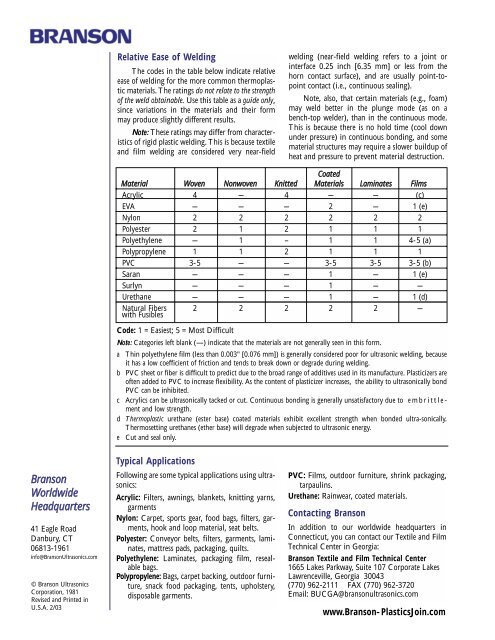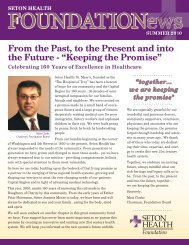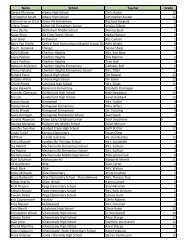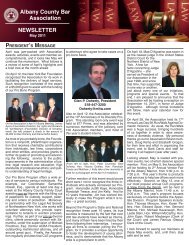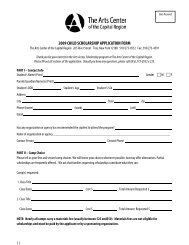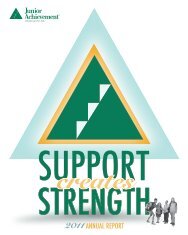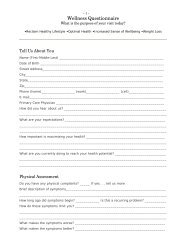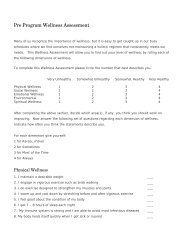Ultrasonic Welding Characteristics of Textiles and ... - e.Venture Studio
Ultrasonic Welding Characteristics of Textiles and ... - e.Venture Studio
Ultrasonic Welding Characteristics of Textiles and ... - e.Venture Studio
You also want an ePaper? Increase the reach of your titles
YUMPU automatically turns print PDFs into web optimized ePapers that Google loves.
Relative Ease <strong>of</strong> <strong>Welding</strong><br />
The codes in the table below indicate relative<br />
ease <strong>of</strong> welding for the more common thermoplastic<br />
materials. The ratings do not relate to the strength<br />
<strong>of</strong> the weld obtainable. Use this table as a guide only,<br />
since variations in the materials <strong>and</strong> their form<br />
may produce slightly different results.<br />
Note: These ratings may differ from characteristics<br />
<strong>of</strong> rigid plastic welding. This is because textile<br />
<strong>and</strong> film welding are considered very near-field<br />
welding (near-field welding refers to a joint or<br />
interface 0.25 inch [6.35 mm] or less from the<br />
horn contact surface), <strong>and</strong> are usually point-topoint<br />
contact (i.e., continuous sealing).<br />
Note, also, that certain materials (e.g., foam)<br />
may weld better in the plunge mode (as on a<br />
bench-top welder), than in the continuous mode.<br />
This is because there is no hold time (cool down<br />
under pressure) in continuous bonding, <strong>and</strong> some<br />
material structures may require a slower buildup <strong>of</strong><br />
heat <strong>and</strong> pressure to prevent material destruction.<br />
Coated<br />
Material Woven Nonwoven Knitted Materials Laminates Films<br />
Acrylic 4 — 4 — — (c)<br />
EVA — — — 2 — 1 (e)<br />
Nylon 2 2 2 2 2 2<br />
Polyester 2 1 2 1 1 1<br />
Polyethylene — 1 – 1 1 4-5 (a)<br />
Polypropylene 1 1 2 1 1 1<br />
PVC 3-5 — — 3-5 3-5 3-5 (b)<br />
Saran — — — 1 — 1 (e)<br />
Surlyn — — — 1 — —<br />
Urethane — — — 1 — 1 (d)<br />
Natural Fibers<br />
with Fusibles<br />
2 2 2 2 2 —<br />
Code: 1 = Easiest; 5 = Most Difficult<br />
Note: Categories left blank (—) indicate that the materials are not generally seen in this form.<br />
a Thin polyethylene film (less than 0.003" [0.076 mm]) is generally considered poor for ultrasonic welding, because<br />
it has a low coefficient <strong>of</strong> friction <strong>and</strong> tends to break down or degrade during welding.<br />
b PVC sheet or fiber is difficult to predict due to the broad range <strong>of</strong> additives used in its manufacture. Plasticizers are<br />
<strong>of</strong>ten added to PVC to increase flexibility. As the content <strong>of</strong> plasticizer increases, the ability to ultrasonically bond<br />
PVC can be inhibited.<br />
c Acrylics can be ultrasonically tacked or cut. Continuous bonding is generally unsatisfactory due to e m brittlement<br />
<strong>and</strong> low strength.<br />
d Thermoplastic urethane (ester base) coated materials exhibit excellent strength when bonded ultra-sonically.<br />
Thermosetting urethanes (ether base) will degrade when subjected to ultrasonic energy.<br />
e Cut <strong>and</strong> seal only.<br />
Branson<br />
Worldwide<br />
Headquarters<br />
41 Eagle Road<br />
Danbury, CT<br />
06813-1961<br />
info@Branson<strong>Ultrasonic</strong>s.com<br />
© Branson <strong>Ultrasonic</strong>s<br />
Corporation, 1981<br />
Revised <strong>and</strong> Printed in<br />
U.S.A. 2/03<br />
Typical Applications<br />
Following are some typical applications using ultrasonics:<br />
Acrylic: Filters, awnings, blankets, knitting yarns,<br />
garments<br />
Nylon: Carpet, sports gear, food bags, filters, garments,<br />
hook <strong>and</strong> loop material, seat belts.<br />
Polyester: Conveyor belts, filters, garments, laminates,<br />
mattress pads, packaging, quilts.<br />
Polyethylene: Laminates, packaging film, resealable<br />
bags.<br />
Polypropylene: Bags, carpet backing, outdoor furniture,<br />
snack food packaging, tents, upholstery,<br />
disposable garments.<br />
PVC: Films, outdoor furniture, shrink packaging,<br />
tarpaulins.<br />
Urethane: Rainwear, coated materials.<br />
Contacting Branson<br />
In addition to our worldwide headquarters in<br />
Connecticut, you can contact our Textile <strong>and</strong> Film<br />
Technical Center in Georgia:<br />
Branson Textile <strong>and</strong> Film Technical Center<br />
1665 Lakes Parkway, Suite 107 Corporate Lakes<br />
Lawrenceville, Georgia 30043<br />
(770) 962-2111 FAX (770) 962-3720<br />
Email: BUCGA@bransonultrasonics.com<br />
www.Branson-PlasticsJoin.com


